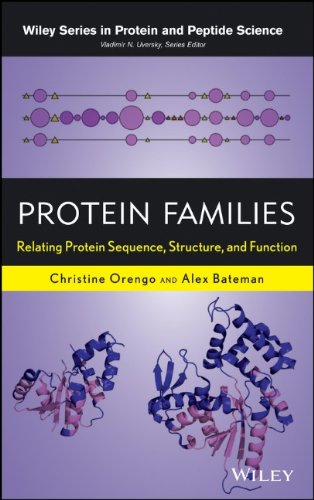

Most ebook files are in PDF format, so you can easily read them using various software such as Foxit Reader or directly on the Google Chrome browser.
Some ebook files are released by publishers in other formats such as .awz, .mobi, .epub, .fb2, etc. You may need to install specific software to read these formats on mobile/PC, such as Calibre.
Please read the tutorial at this link: https://ebookbell.com/faq
We offer FREE conversion to the popular formats you request; however, this may take some time. Therefore, right after payment, please email us, and we will try to provide the service as quickly as possible.
For some exceptional file formats or broken links (if any), please refrain from opening any disputes. Instead, email us first, and we will try to assist within a maximum of 6 hours.
EbookBell Team

4.3
48 reviewsNew insights into the evolution and nature of proteins
Exploring several distinct approaches, this book describes the methods for comparing protein sequences and protein structures in order to identify homologous relationships and classify proteins and protein domains into evolutionary families. Readers will discover the common features as well as the key philosophical differences underlying the major protein classification systems, including Pfam, Panther, SCOP, and CATH. Moreover, they'll discover how these systems can be used to understand the evolution of protein families as well as understand and predict the degree to which structural and functional information are shared between relatives in a protein family.
Edited and authored by leading international experts, Protein Families offers new insights into protein families that are important to medical research as well as protein families that help us understand biological systems and key biological processes such as cell signaling and the immune response. The book is divided into three sections:
All chapters are extensively illustrated, including depictions of evolutionary relationships. References at the end of each chapter guide readers to original research papers and reviews in the field.
Covering protein family classification systems alongside detailed descriptions of select protein families, this book offers biochemists, molecular biologists, protein scientists, structural biologists, and bioinformaticians new insight into the evolution and nature of proteins.Content:
Chapter 1 Automated Sequence‐Based Approaches for Identifying Domain Families (pages 1–24): Liisa Holm and Andreas Heger
Chapter 2 Sequence Classification of Protein Families: Pfam and other Resources (pages 25–36): Alex Bateman
Chapter 3 Classifying Proteins into Domain Structure Families (pages 37–68): Alison Cuff, Alexey Murzin and Christine Orengo
Chapter 4 Structural Annotations of Genomes with Superfamily and G3D (pages 69–97): Julian Gough, Corin Yeats and Christine Orengo
Chapter 5 Phylogenomic Databases and Orthology Prediction (pages 99–124): Kimmen Sjölander
Chapter 6 The Nucleophilic Attack Six‐Bladed β‐Propeller (N6P) Superfamily (pages 125–158): Michael A. Hicks, Alan E. Barber and Patricia C. Babbitt
Chapter 7 Functional Diversity of the HUP Domain Superfamily (pages 159–189): Benoit H. Dessailly and Christine Orengo
Chapter 8 The NAD Binding Domain and the Short‐Chain Dehydrogenase/Reductase (SDR) Superfamily (pages 191–206): Nicholas Furnham, Gemma L. Holliday and Janet M. Thornton
Chapter 9 The Globin Family (pages 207–235): Arthur M. Lesk and Juliette T.J. Lecomte
Chapter 10 Functional Adaptation and Plasticity in Cytoskeletal Protein Domains: Lessons from the Erythrocyte Model (pages 237–284): Anthony J. Baines
Chapter 11 Unusual Species Distribution and Horizontal Transfer of Peptidases (pages 285–314): Neil D. Rawlings
Chapter 12 Deducing Transport Protein Evolution Based on Sequence, Structure, and Function (pages 315–339): Steven T. Wakabayashi, Maksim A. Shlykov, Ujjwal Kumar, Vamsee S. Reddy, Ankur Malhotra, Erik L. Clarke, Jonathan S. Chen, Rostislav Castillo, Russell de La Mare, Eric I. Sun and Milton H. Saier
Chapter 14 Families of Sequence‐Specific DNA‐Binding Domains in Transcription Factors across the Tree of Life (pages 383–420): Varodom Charoensawan and Sarah Teichmann
Chapter 15 Evolution of Eukaryotic Chromatin Proteins and Transcription Factors (pages 421–502): L. Aravind, Vivek Anantharaman, Saraswathi Abhiman and Lakshminarayan M. Iyer
Chapter 13 CRISPR‐Cas Systems and Cas Protein Families (pages 341–381): Kira S. Makarova, Daniel H. Haft and Eugene V. Koonin